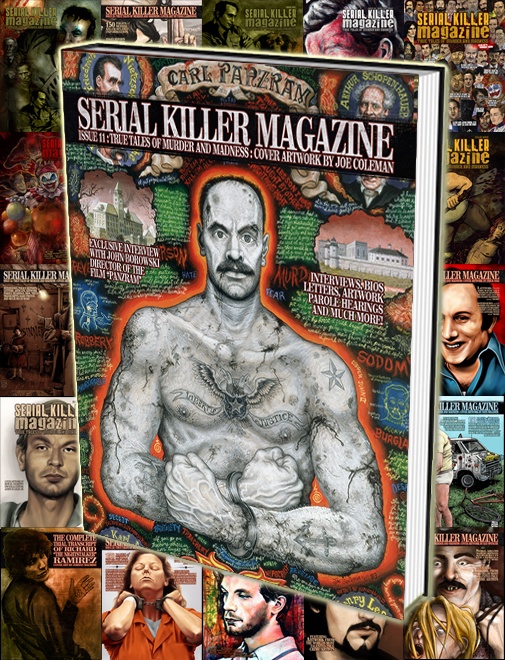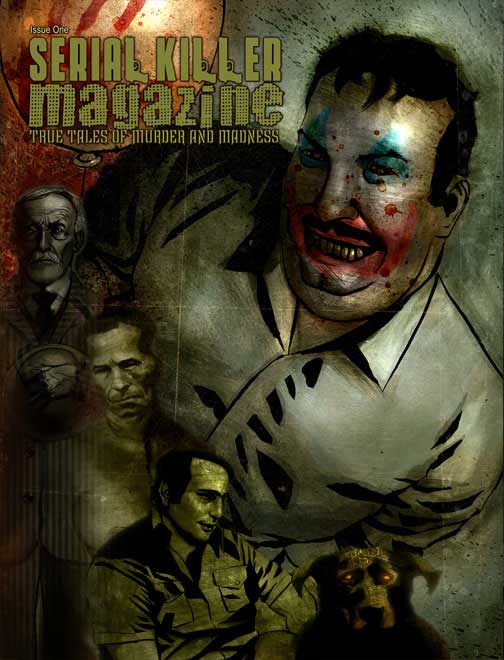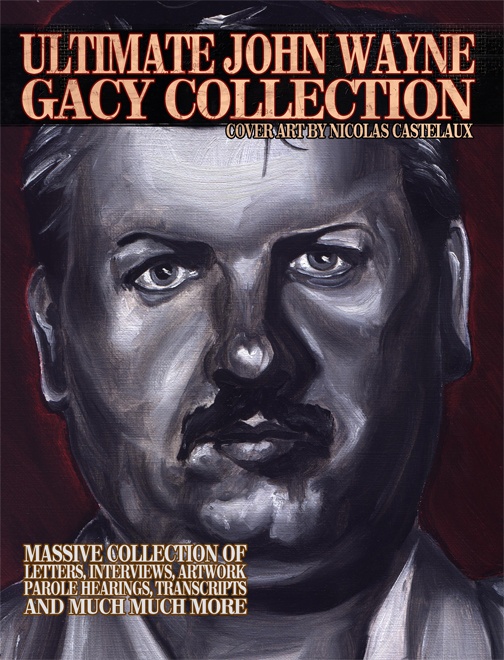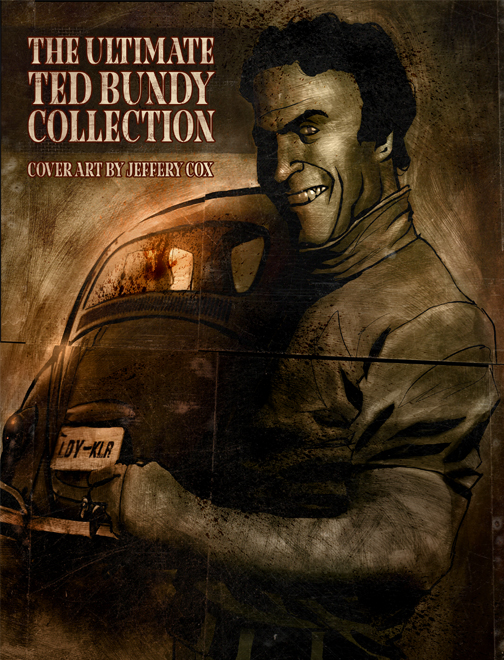Karl DENKE
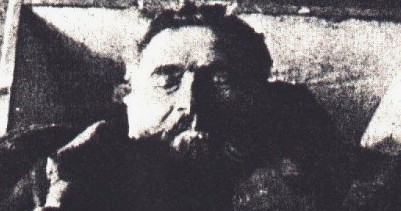
AKA "The Cannibal of Ziębice"
Classification: Serial killer
Characteristics: Cannibalism - Homicide investigators were unable to explain his actions
Number of victims: 30 +
Date of murders: 1909 - 1924
Date of arrest: December 21, 1924
Date of birth: August 12, 1870
Victims profile: Men and women (primarily journeymen and homeless persons)
Method of murder: Beating with an axe
Location: Munsterberg, Silesia, Germany
Status: Committed suicide by hanging himself with his suspenders, in his cell, on December 22, 1924
Karl Denke (August 12, 1870 – December 20, 1924) was a serial killer from Germany.
Denke was born in Münsterberg/Silesia in Germany, today's Ziębice in Poland. There is not a great deal of information about his early life, but in adulthood he was well liked in his community, and worked as an organ player at the local church.
On December 20, 1924, Denke was arrested after attacking a man at his house with an axe. Police searched Denke's home and found human flesh in huge jars of curing salts. A ledger contained the details of 40 people Denke had murdered and cannibalized over the years. It is thought he even sold the flesh of his victims at the Breslau (today's Wrocław) market.
The day after his arrest, Denke hanged himself in his cell, meaning his exact motives can only be guessed at.
Denke, Karl
A native of Munsterberg, Silesia -- now Ziebice, Poland -- Denke operated a rooming house in his hometown between 1918 and 1924. His tenants affectionately called him "Papa," and Denke was also well-liked in the community at large, serving as the organ-blower for his local church. On the side, in three years time, he also murdered and devoured a minimum of thirty victims.
On December 21, 1924, one of Denke's tenants, a coachman by the name of Gabriel, heard cries for help which seemed to emanate from Denke's flat, downstairs. Afraid the landlord might be injured, Gabriel rushed down to help... and found a young man staggering along the corridor, blood streaming from his open scalp. Before he fell unconscious on the floor, the victim blurted out that "Papa" Denke had attacked him with an ax. Police were summoned and arrested Denke, scouring his flat for evidence.
They turned up identification papers for twelve traveling journeymen, plus assorted items of male clothing. In the kitchen, two large tubs held meat pickled in brine; with the assorted bones and pots of fat, detectives reckoned that it added up to thirty victims, more or less. In Denke's ledger, they found listed names and dates, with the respective weights of bodies he had pickled dating back to 1921.
According to the record, he had specialized in slaying beggars, tramps, and journeymen who seemed unlikely to be missed around the neighborhood. No evidence of sexual assault was ever publicized in Denke's case, and homicide investigators were unable to explain his actions. Shortly after his arrest, the killer hanged himself with his suspenders, in his cell, permitting generations of historians to speculate in vain about his motives.
Michael Newton - An Encyclopedia of Modern Serial Killers
Vater Denke
Foodfirstblog.blogspot.com
This one is called the "unusual case" or "the forgotten cannibal". He wasn't a paraphiliac, nor was he an alcoholic. Nothing spectacular about his childhood either.
Karl Denke was born on August 10, 1870 in Oberkunzendorf (today Kalinowice Górne) in Lower Silesia and moved to Muensterberg (today Ziębice) ten years later. He was a somewhat dull, if not retarded child. He quit school and left home at the age of 12 to work as apprentice with a gardener. When he turned 25, his father died. His brother took over the family farm while Karl was given money to buy some land. Being an unsuccessful farmer, he sold the land and bought a house in town (on present Stawowa Street). However recession forced him to sell again this property. He was finally left with a little apartment on first floor and a small shed in the backyard of the house.
Denke's first victim was most probably Emma Sander, a 25 year old girl killed in 1909, however this was established only 15 years later, after Denke's death. The latter occurred on a Sunday night of December 21st, 1924. That day, around 1 p.m. a man covered in blood ran into the local police station. He was visibly terrified and told the officers that it was Karl Denke, who tried to kill him with a pickaxe. The policemen could not believe the stranger: Vincenz Oliver was a vagabond, while Karl Denke has had a perfect reputation among inhabitants of Muensterberg - a town of nine thousand where everyone knew each other. However a doctor confirmed that Oliver must have been attacked with a heavy cutting tool. Finally Denke was arrested. He confirmed attacking Oliver, but claimed he was just defending his property from an unknown burglar. A few hours later Denke's body was found dead in the police station's cell. The well respected citizen hanged himself using a handkerchief.
A few days later - on December 24 - the policemen went to Denke's house...
In order to describe what they saw there, it is best to refer to the report given by Friedrich Pietrusky (then acting head of the Institute of Legal Medicine in Breslau). The report dates back to 1926 and was published in the Deutsche Zeitschrift für gesamte gerichtliche Medizin (Band 8, S. 702-726), here quoted after Mark Benecke:
“The first findings made in Denke’s house during the search were bones and pieces of meat. The latter were in a salt solution found in a wooden drum. There were altogether fifteen pieces with skin. Two parts of the breast, which is strongly hairy. The torso is cut through the middle, three fingers above the navel. Its lateral limit is the front shoulder blade. In the piece of the anterior abdominal wall, the middle of the navel is visible. The remaining pieces belong to the side and back parts. The largest is about forty by twenty centimeters large. Particularly striking was a very clean anus with hand large parts of both buttocks.
The meat is brownish red and does not feel as if the body would have lost much blood. On the back some soft-bluish discoloration is visible as well as livor mortis, which leads to the conclusion that the disassembly of the body took place several hours after death.
There is no evidence of vital reaction of the bodies to the cuts made, which means that the latter were not made while the victims were still alive. Nevertheless some skin and muscles from the necks were missing, as well as extremities [arms and legs], head and sexual organs. Lesions could not be determined, nor the nature of death or the tool of crime.
In three medium-sized pots filled with cream sauce, some cooked meat, partially covered with skin and human hair was found. The meat was pink and soft. All pieces seemed cut from the gluteal area [buttocks]. One pot had only half a portion. Denke must have eaten the other piece short before being arrested".
The last assumption - though logical, as it seems - is not proven by the facts. Police found some human meat and one portion was visibly gone but there is nothing to confirm that it was Denke who had eaten it. Equally possible was that he had sold that meat or given it to his "guests" (although the latter would seem like an unnecessary waste). However Pietrusky points out to other problems with establishing who actually could have eaten that meat:
"I should like to mention here that there is no evidence that Denke has ever sold the meat of his victims [all evidence has obviously been eaten!]. However, it seems certain that his guests, that is the vagabonds, were offered to eat it".
Again, this is only his assumption. Why should Denke rather offer meat to his guests, than sell it on the market? By the way, note the interesting fact that Pietrusky is writing the report over a year after Denke's death. The legend of selling human meat on the market must have been widespread since the discoveries made in Münsterberg, as the forensic feels in duty to refer to it. Then Pietrusky continues:
"In the third pot were found numerous pieces of human skin and parts of the aorta in a gelatinous mass. A bowl on the table in his room was filled with amber colored fat, that appeared to be human. Biological test gave a weak-positive result for the presence of human protein.
In the shed, in which the meat pieces were found, was also a barrel full of bones that were cleaned of tendons, muscles etc. that most probably have been priorly cooked. The investigation initially revealed the existence of six forearm bones, which means that they belonged to three people at least. Another traces were found behind the shed. A part of a leg remained in the pond that Denke had dug many years before and also skeletal pieces were uncovered in the local forest. Here is the full list of what has been sent to us for examination:
- sixteen femurs of which one pair of remarkably strong ones, two pairs of very thin ones, six pairs and two left femurs;
- fifteen medium-sized pieces of long bones;
- four pairs of elbow bones;
- seven heads of radii;
- nine lower parts of radii;
- eight lower parts of the elbow;
- a pair of upper shinbone;
- a pair of lower elbows and radii, of which extremities still remain well connected;
- a pair of upper arms and a pair of upper arm heads;
- a pair of collar bones;
- two shoulder blades;
- eight heels and ankle bones;
- one hundred and twenty toes and phalanx;
- sixty-five feet and metacarpal bones;
- five first ribs and one hundred-fifty pieces of ribs.
All bones, with the exception of a few, were very light, porous and fatless.
In the municipal forest remained as well parts of a spine and four parts of a clean, dissected male pelvis, which on one side showed traces of saw-cutting. Only one piece of head-bone was found. This is a piece of the inferior petrosal sinus area, jagged on the front side. It looks broken and bears visible signs of sharp sawing on its top. This piece of bone is cross-marked with ink.
Given the size and condition of the bones, we can assume, that there was one particularly strong individual, two others were of delicate bone structure, another suffered from coxa vara. [...]
The cutting surfaces of the bones are jagged, as if blunt force was applied, such as the blunt end of an axe or a hammer. Some bones were visibly sawed. Few spots show traces of a sharp tool - an axe most probably. Similarly such traces were found on the articulations, which must have been cut with a knife.
Based on these findings, we were able to declare that the bones sent to us, belonged to at least eight people".
Of course other bones were yet to be uncovered over the years to come. The last pieces (including head bones) were found in the late 1940's, just after World War II, by now Polish inhabitants of the house.
"Considerably more revealing was Denke’s dental collection. We received a total of three hundred and fifty-one teeth.
These were found in a moneybag and in two tin boxes, on which "Pepper" and "Salt" was written, as well as in three paper bags, which were destined to keep pepper. They were partly sorted according to their size: the molars were in the moneybag, while the others in the two boxes and in the paper bag. In yet another paper bag were teeth that belonged probably to a single person, and in a third bag three lower incisors were found with strongly atrophic structure - this one came probably from an old individual. All teeth, with the exception of six, were well preserved.
[...]
The investigation led us to very notable results. The remains of the bones were definitely of a minimum of eight victims, however other circumstances of the case make it likely that the number of victims was much higher. The teeth that were found belonged certainly to at least twenty people [...]. Professor Euler noted however that some individual teeth appear more than twice as often than is statistically expected (this concerns second premolars and incisors), which suggests that there might have been even more victims.
The fact that the majority of victims suffered from caries leads us to think that the number of victims was higher. In addition, it must be stated that people in old age lacked proper dental treatment. Professor Euler estimates cautiously that the teeth belonged to at least twenty-five individuals.
The extractions were done in different ways. Some teeth seem to have been taken out quite easily due to senile atrophy, while others were rather solidly rooted and extracted with force. In many cases we discerned parts of the alveolar wand. Some specimens, especially the molars and premolars show fractures in tooth enamel that couldn’t have occur during victims’ lifetime. On some there are traces of claws with very sharp edges. The appearance of some roots seems to justify the assumption that the jaw had been cooked in advance. Individual teeth have been broken - probably in the process of extraction. Again Denke had no luck".
The last remark sounds a little odd...
"Especially interesting is the answer to the question of the age [of the victims]. From the list later mentioned we know nearly all victims. There are no young individuals among them. Now, there are four wisdom teeth, that clearly came from the same people [or individual?], that have peculiarities usually found on the teeth of the fifty year old. The investigation of the other teeth showed that at least four-fifths of the victims were seniors. Professor Euler summarized that among the victims there was certainly one person who was not older than sixteen years [seemingly he did not figure on the mentioned list], while the majority were significantly older than forty years; two individuals were probably twenty to thirty year old and one between the thirtieth and fortieth year of his life.
The tests did not give satisfactory results concerning the sex of the individuals, nor their jobs. For obvious reasons, nothing specific can be said about the time that elapsed after their death. What is certain is only that some teeth have been extracted years ago. The pulling out of the teeth of young people must have taken place many weeks ago.
In any case, the study of the teeth brought much more information regarding the number and age of the victims, than could be learned from the bones, but it must be taken into consideration that the latter were only partially recovered. [...]"
Next part of the report is concerned with findings, that didn't seem to have anything in common with the transforming of human tissue. Nevertheless further investigation revealed that Denke experimented with human leather and soap making based on human fat, although his methods remained utterly primitive.
"Among Denke’s suspenders, three pairs were made of human skin. They are about six centimeters wide and seventy centimeters long. The leather is not smooth and at one spot broken. It seems not tanned but only free of sub-skin tissue and dried. At one spot it is obvious, that he made the cuts under the nipples, which are still clearly visible. Four are patched with human skin taken from the pubic area. [...] Some traces of louse nits were also discerned under microscope. All suspenders show traces of use and one of them Denke was found on Denke himself"
"Beside suspenders, Denke had also leather straps cut out of human skin, that he treated with shoe polish and parts of which were sawn together with pieces and rags of cloth. Many of these laces were made of human hair: one sample was one centimeter long, grey-white and - according to study - was taken from the head. From which area of the body came the other pieces, this cannot be said.
In addition to various old clothes, which were in the apartment, there were forty-one large and small bundles of rags, bent together with straps. The investigation lead to no results concerning these old, worn-out clothes. [...]
Equally strange was Denke’s collection of coins. This consists of round flat unfired clay pieces, size ranging from a Pfennig to fifty Pfennigs, which have on just one side the image of a real coin.
A large number of ID cards and private papers of several persons were found in Denke’s room as well as account books on revenue from the garden, on working hours and so on. They were relatively well managed and clear. More attention was attached to some loose sheets of paper on which names of thirty men and women appear. In front of every name there is a date - probably the date of death of the person. At No. 31 there is only a date. The record is chronological. Numbering starts only at number eleven. In case of women, only the first name is indicated, the notes for men are much more detailed, usually with date of birth, place of stay and status of the person concerned. The assumption that this is the list of victims is justified by the fact, that ID cards found in Denke's room belonged to people whose whereabouts could not be identified otherwise [...]. By the appearance of the sheets, we can assume, that the list has not been made in one day.
On one side (of the sheets) are the initials of the name followed by a number, which most likely indicates the weight of the person concerned. On another slip of paper, next to a name stands what follows: 'dead, 122, naked 107, disemboweled 83'. This last figure is then repeated next to the name of the person concerned in the last table.
[...]
Of tools used for the killings and fragmentation of the bodies, these can be said:
- three axes;
- a large wood saw;
- a tree saw;
- a pickaxe;
- and three knives.
All these have been seized by us with the exception of the axes and the tree saw, which are sent to be tested for traces of human blood. The saw is a large tool, with which - as the microscopic examination revealed - also wood have been sawn. The detection of human blood succeeded. However we suppose that he used much finer tools - probably the tree saw - to cut heads and the pelvic bones. The pickaxe was used for the last assassination attempt and human blood can be stated on this tool as well. It has a length of forty centimeters and is pointed forward. As for the knives, we could not make things all clear".
Then Dr. Pietrusky's report continues with information about Denke himself, but these are pretty scarce: the killer have had a reputation of good, if somewhat recluse citizen. As a child he was believed to be dull. He wasn't able to learn and he didn't speak (he only begun to speak at age of six). Teachers declared him an idiot and often punished him. "He's very obstinate and lacks respect for teachers" - they noted.
As adult he was treated with suspicion but rather because of his solitary status and sexual indifference. He was said to be "neither man nor woman".
His family stated that he never showed signs of fear or disgust, however he had no violent temper - they thought. He had accepted their invitation only once, but it was memorable anyhow: his brother recalled that Karl had eaten 2 pounds of meat! He described him as Vielfraß - the glutton. Nevertheless Karl's good manners, humble behavior and occasional charity earned him the nickname of Vater Denke - 'Father Denke'.
Denke's personality is far from established. All we know about him comes from documents or sparse remarks of his relatives and co-citizens made only after his death (little doubt people became biased by the shocking revelations found in his apartment). His crimes were not motivated sexually and his conduct seems rather rational. From all information that we have, we can assume that he was an extremely selfish, retarded man, unable to distinguish moral categories. Probably he didn't mean to harm people but his need for food was primordial. After a series of failures at school, farming, business, he found a simple and effective means of procuring food (and probably income) by killing vagabonds he met at the train station. He could gain their trust quite easily and take them home virtually unnoticed (the train station was a short walk from his place and both were on the outskirts of town).
At the end we shall also ask one pertinent question: how could Denke's crimes be perpetrated for at least fifteen years completely unnoticed by anyone in Münsterberg, including his neighbors?
And symptoms were abundant! Some time before Vincenz Oliver escaped the killer in extremis, at least two men managed the same (but they didn't report the fact to police, as it seems):
- once an apprentice covered in blood ran out of Denke's appartment; he was never heard of again;
- some time later a vagabond complained to Denke's neighbors that he had been asked to write a letter and soon after found himself with a chain on his neck. He was stronger than Denke and made his way outside. Nobody reporter these to police.
Other facts occurred as well. For instance repeated complaints of Denke's neighbors about a strong penetrating smell from his apartment. The neighbors noticed as well he always had plenty of meat, even in the worst period of inflation. They assumed however it was dog meat, so gave little attention to it, even though black market slaughter of dogs was illegal. Nor the buckets of blood he poured into the courtyard made them think. He was often heard hammering and sawing at night, but no neighbor would become suspicious: after all he was preparing the dishes to be sold at the morning market...
It is quite remarkable as well that he was probably often seen going out at night with large heavy bags and returning home with empty hands some time later. What was he doing, what was in the bags, why at night? Where did the old garments and shoes, that he was selling come from?
It seems plausible that some neighbors were suspicious about Denke, but as long as nobody from the town was hurt, he remained safe.
An Infamous Denke
Denke.org
Born 8/12/1870, died 12/22/1924
The son of a wealthy farmer, Karl Denke was born in Oberkunzendorf (near present Ziębice Poland).
Details on this serial killer are sketchy, but here is a summary of the information I have:
Karl Denke lived in Munsterberg, Silesia, Germany (now Ziębice Poland). He is believed to have killed between 30 and 40 people, primarily journeymen and homeless persons. Reports state that he had been engaging in cannibalism for several years prior to his capture. There are rumors that he actually sold human meat. He killed all his victims in his house on Stawowa Street.
Apparently, Karl Denke was well liked in the community before his arrest. He is known to have been called "Vatter Denke" (which translates to Father Denke or Papa Denke) by the locals. He also served as the organ blower for his local church.
On December 21, 1924, a coachman by the name of Gabriel, heard cries for help which seemed to emanate from Denke's room. Gabriel rushed down to help and found a young man named Vincenz Olivier staggering along the corridor, blood streaming from his open scalp. Before he fell unconscious on the floor, the victim blurted out that "Vatter" Denke had attacked him with an ax.
Police were summoned and arrested Denke, scouring his apartment for evidence. They turned up identification papers for twelve traveling journeymen, plus assorted items of male clothing. In the kitchen, two large tubs held meat pickled in brine; with the assorted bones and pots of fat, detectives reckoned that it added up to thirty victims, more or less. In Denke's ledger, they found listed names and dates, with the respective weights of bodies he had pickled dating back to 1921.
He killed himself in prison the night of his capture. Reports state that he hung himself with a noose fashioned from a handkerchief, leaving historians with no explanation or motive for his actions.
His life was investigated by Lucyna Biały (the custodian of Silesian Library of Wrocław University) in the summer of 1999. Mrs Biały based her research on the German press of twenties. Her work was published by editor Tadeusz Dudź in "Gazeta Wyborcza" and "Gazeta Wrocławska". This article is one of the ones below.
The Household Equipment Museum in Ziębice held an exhibition from July-August of 1999. The exhibit was entitled "An ancient iconography of Ziębice" and featured tools used by Karl Denke in his crimes.
The information in the article is likely to be the most accurate information available currently on Karl Denke. It is from a very reliable source, and is much closer to the original sources than anything I have gotten my hands on yet.
For those interested in how rumors get started, there are a few different versions of Karl Denke's story in print and on the Internet. There are a couple of myths:
1. He was not an innkeeper - apparently this rumor was started because of a bad German translation. No German sources that I have found say that he was an innkeeper, but most English sources do.
2. He died in 1924, not 1942. At one point, someone reversed the numbers and printed the information with 1942 as the year of his death. This has been repeated by several others.
3. Many sources say that he hung himself with suspenders, rather than a handkerchief. While that makes more sense, it is apparently untrue.
The Cannibal from Ziębice
He peddled human flesh as meat in Wrocław. He said it was pork.
The Polish Word
August 2nd, 1999
Karl Denke, a devout, peaceful, generally respected citizen of Ziębice, turned out to be a cannibal who killed 40 people. He pickled their flesh in jars and sold it on the Wrocław market as… "pork." It all came to light after Christmas of 1924. In Ziębice’s Museum of Household Goods, they decided it was quite an appetizing story and dedicated a little corner of the museum to him. On the table, are, among others things, bloody knives and axes, and a meat grinder is attached to the table as well.
The story of the Cannibal of Ziębice was resurrected by Lucyna Biały, the curator of the archive of old printed materials in the University Library at Piasek in Wrocław. She came across the story by accident while preparing a catalog of the Silesian press. She presented it in Ziębice during a scientific conference. The title of her report was Casus Denke- The Ziębice Cannibal. The first to mention the cannibal from Ziębice was the Ząbkowice-Ziębice Journal Frankestein- Murnsterberger Zeitung (for the less informed Frankestein was the name of Silesian Ząbkowice before the war).
The information appeared on December 25, 1924. A more thorough account was provided by Ziębice’s newspaper, published tri-weekly, Munsterberger Zeitung. From it, one could infer that this person, who carried the cross at funerals of the Evangelist commune, and helped beggars and people in need, was a monster. It is hard to believe, but it happened…
Karl Denke was born August 12, 1870. His family was quite wealthy; they were farmers. Karl was a hard child to raise. He ran away from home at the young age of 12. When he graduated from elementary school, he started apprenticing with a gardener. He started life on his own at the age of 25. It was then that his father died, the farm was taken over by his older brother, and he himself bought a piece of land with the money from his inheritance. However, farming did not go well for him, so he sold his land. He bought himself a little house on present Stawowa Street in Ziębice. Unfortunately, his savings were devoured by the uncontrollable inflation of his time. He had to sell his house, but he did not move out. He still lived in a little apartment on the right side of the ground floor of the house. And he still occupied the shop standing next to the house.
It was Sunday, December 21st, 1924, when a man covered in blood ran into a police station. He swore by all things holy that it was Denke, who did this to him. The policemen could not believe it possible that poor, nice Karl, enjoying unimpeachable opinion in a town of eight thousand, would do such a thing to this bloodied wretch of a beggar.
However, Vincenz Olivier would not change his testimony. Denke was arrested. The very same night, when a guard looked into his cell, he was dead. He had hanged himself. How desperate he must have been to do it with a noose made from… a handkerchief.
After the corpse was returned to the family, the policemen went to his house. It was Christmas of 1924, the happy day, on which the Lord of the Universe was born. But, the Christmas Eve of 1924 was a sorrowful one. The economical crisis abound, money was losing its value from one day to the next, and a regular family could not afford to put anything decent on their table. The policemen were saddened even more. What they saw in Denke’s shop, could have caused even the most formidable policeman, who had served the longest in the law enforcement profession, to tremble in fear.
In the closet hanged many blood stained clothes
including one skirt. On the window seal, lay various kinds of documents with the names of people released from prisons or hospitals. Jars of pickled meat (the laboratory analysis showed quickly, that it was of human origin), human bones prepared for thermal processing, instruments for the production of belts, leather straps, and other products from human skin were found. Denke even processed human hair, using it to make shoe laces. He would sell it all door to door, the permission for which he received from city officials. The meat, with the permission of Wrocław butchers, he sold in Wrocław. It was a time of crisis and every gram of meat would find a buyer… The policemen were able to identify the names of 20 victims of the Ziębice Cannibal. It is believed however, that he pickled in his manufacturing shop about 40 residents.
For now, the local cannibal has only a small place in a museum in Ziębice. However, it is not impossible that he will be granted even a bigger exhibit. After all, not all towns can boast their own cannibal!
The Cannibal of Ziębice
The Wrocław Gazette – 30 July, 1999
The head librarian of the University of Wrocław discovers the dark history of a Silesia Minor town.
(ZIĘBICE, Silesian Ząbkowice county) Near the end of December, 1924, despite the upcoming New Year’s, in the markets of Wrocław the sale of pork drastically declined. One of the vendors, by permission of the Wrocław Butchers, was a certain Karl Denke – a peaceful, sober-minded, pedantic, and devout citizen of Ziębice (at the time, German Muensterberg.) At the funerals of members of the Evangelist commune, he carried the cross. He refrained from alcohol and did not have relations with women… The Christmas holiday of that year in Ziębice was not a joyous one. On Dec. 25th the Ząbkowicki Journal Frankenstein – Muensterberger Zeitung mentioned, for the first time, Karl Denke as the Ziębice murderer, cannibal, and peddler of human flesh as meat. On the 28th of Dec. that same year a more thorough account of him appeared in the tri-weekly Muensterberger Zeitung.
Who, then, was Karl Denke, the Ziębice cannibal of dual personalities, not unlike Dr. Jekyll and Mr. Hyde? He was born August 12th, 1870 into the family of a well-to-do farmer in one of the small Silesia Minor villages, the name of which is not mentioned in historical records. In school, he was one of the worst students. He ran away from home for the first time at the age of 12.
A Benefactor of Beggars and Tramps
After finishing elementary school Karl Denke began an apprenticeship with a gardener. He lost his father at the age of 25. The farm was taken over by his older brother, but Karl inherited a sum of money with which he purchased a farm and garden in Ziębice. He turned out, however, to be a rather poor farmer. He had to sell his land, and with the money he purchased a two-story house with a shed by it, on today’s Stawowa Street in Ziębice. After WWI he lost his saving due to inflation. He sold his house, but continued to rent the same apartment on the ground floor, on the right hand side.
Karl Denke enjoyed a decent reputation in this town of 8 thousand. He led an honest, lower middle class lifestyle. He helped beggars, and even allowed some of them to stay overnight in his apartment. It was no wonder, then, that Ziębice Police agreed to give him a vending license. The peddler sold leather suspenders, belts, shoe laces, etc. In Wrocław, he also offered pickled “boneless pork.”
Shocked Policemen
On Sunday, Dec. 21st of that same year, around 1 p.m., a man covered in blood came to the Ziębice police station and told how he had barely escaped death in Karl Denke’s apartment. Police, at first, could not understand how this vagrant by the name of Vincenz Olivier could be accusing such a decent citizen. Nevertheless, he was given medical attention and the doctor confirmed that Olivier was indeed seriously wounded. Finally, police decided to arrest Karl Denke. During interrogation, Denke explained that he had attacked the vagrant Olivier as he attempted to rob him after receiving a handout. Consequently, Denke was locked up in a holding cell. That same night, at about 11:30, when Sergeant Palke looked in on him, he found Karl Denke dead. He had hanged himself on a noose made from a handkerchief.
Shoelaces Made From Human Skin
Only after turning over the corpse to Denke’s relatives did the police – on Dec. 24th – go to his apartment to secure the property of the suicide victim. What the constables saw in his apartment and shed sent them into a state of terror.
They found several containers filled with pickled human flesh, an apparatus for making soap, and human bones prepared for processing. On the walls were hanging dozens of belts, suspenders, and shoelaces made from human skin. The closet was filled with blood stained clothing, among them one skirt. On the window seal and table were various documents and receipts with the names of people that had been released from prisons and hospitals.
Testing of the pickled flesh performed by chemists in Wrocław confirmed that it was indeed human. Ultimately, the police were able to identify 20 victims of the Ziębice cannibal. It is believed, however, that Karl Denke killed, cut up, pickled, and processed more than 40 people.
The Secrets of Madame Curator
These horrific facts from the relatively recent history of Ziębice were brought to light by day manager Lucyna Biały, curator of the archive of old printed materials in the University Library at Piasek in Wrocław. While going over The Catalog of the Silesian Press, Ms. Biały stumbled upon this macabre story from Ziębice’s history. She shared her discoveries at a popular science conference in Ziębice. It was on this report by the Madame Curator: “Casus Denke – The Cannibal of Ziębice” that I based this account.
However, this was not really a “cacus” (an isolated case.) Let us return to Lucyna Biały’s report. The author writes, “It is necessary to emphasize that since the beginning of the 20th Century, on German lands, there have been even more perverse, mass murderers. Names such as Ludwik Tresnov come to mind, who raped, killed, and dismembered four children in the area of Osnabrueck. Friedrich Haarmann, called the “Butcher from Hanover,” killed about 50 young people and sold their flesh as meat. He was beheaded in 1926. A bank clerk, Freitz Angerstein from Haiger killed probably 7 people. He was sentenced to death in 1925. Finally, Peter Kuerten, called “The Vampire of Duesseldorf,” was accused of 9 murders and 7 attempted murders. He drank the blood of his victims. He was beheaded on July 2nd, 1931.
But, to exploit Denke…?
The mayor of Ziębice, Tadeusz Wolski, was faced with quite an issue. On the one hand, it was hard to imagine a persona more despicable than Karl Denke, who does not exactly bring positive fame to the town. But, this executioner’s coin has two sides. For do not famous murderers, all kinds of torture chambers and other human perversions lure the curious? A rhetorical question…
“Let us think how we can exploit our cannibal.” says the mayor. “Perhaps in our Museum of Household Goods in the town hall building, we could give him a little corner? Maybe we should mark the place where he lived. Although, we wouldn’t want to disturb the current, peaceful residents of Stawowa Street.” There are three new houses standing there now, and no longer any trace of Denke’s shop.
Tadeusz Dudź
“Karl Denke was a peaceful, sober-minded, pedantic, and devout citizen of Ziębice.” claims Grzegorz Zając, the creator of the Denke exhibit (pictured with the figure of a beggar, belonging to the Ziębice artist Langer.) “– as is turns out, he was a murderer and cannibal as well, who chose beggars as his victims.”
Lucyna Biały, curator of the archive of old printed materials in the University Library at Piasek in Wrocław, after an exhaustive analysis of the Pre-War Press published in Ząbkowice Śląskie and Ziębice, brought Karl Denke, the Ziębice Cannibal, back to life.
Karl Denke
The son of a wealthy farmer, Karl Denke was born 12 August, 1870, in Oberkunzendorf (near present Ziebice Poland).
Details on this serial killer are sketchy, but here is a summary of the information I have: Karl Denke lived in Munsterberg, Silesia, Germany (now Ziebice Poland). He is believed to have killed between 30 and 40 people, primarily journeymen and homeless persons.
Reports state that he had been engaging in cannibalism for several years prior to his capture. There are rumors that he actually sold human meat. He killed all his victims in his house on Stawowa Street.
Apparently, Karl Denke was well liked in the community before his arrest. He is known to have been called “Vatter Denke” (which translates to Father Denke or Papa Denke) by the locals. He also served as the organ blower for his local church.
On December 21, 1924, a coachman by the name of Gabriel, heard cries for help which seemed to emanate from Denke's room. Gabriel rushed down to help and found a young man named Vincenz Olivier staggering along the corridor, blood streaming from his open scalp.
Before he fell unconscious on the floor, the victim blurted out that "Vatter" Denke had attacked him with an ax. Police were summoned and arrested Denke, scouring his apartment for evidence. They turned up identification papers for twelve traveling journeymen, plus assorted items of male clothing.
In the kitchen, two large tubs held meat pickled in brine; with the assorted bones and pots of fat, detectives reckoned that it added up to thirty victims, more or less. In Denke's ledger, they found listed names and dates, with the respective weights of bodies he had pickled dating back to 1921. He killed himself in prison the night of his capture.
Reports state that he hung himself with a noose fashioned from a handkerchief, leaving historians with no explanation or motive for his actions. His life was investigated by Lucyna Bialy (the custodian of Silesian Library of Wroclaw University) in the summer of 1999.
Mrs Bialy based her research on the German press of twenties. Her work was published by editor Tadeusz Dudz in “Gazeta Wyborcza” and "Gazeta Wroclawska". This article is one of the ones below.
The Household Equipment Museum in Ziebice held an exhibition from July-August of 1999. The exhibit was entitled “An ancient iconography of Ziebice” and featured tools used by Karl Denke in his crimes. Webmaster's note: the information in the articles below is likely to be the most accurate information available currently on Karl Denke. It is from a very reliable source, and is much closer to the original sources than anything I have gotten my hands on yet.
For those interested in how rumors get started, there are a few different versions of Karl Denke's story in print and on the Internet. There are a couple of myths: 1. He was not an innkeeper - apparently this rumor was started because of a bad German translation. No German sources that I have found say that he was an innkeeper, but most English sources do. 2. He died in 1924, not 1942.
At one point, someone reversed the numbers and printed the information with 1942 as the year of his death. This has been repeated by several others. 3. Many sources say that he hung himself with suspenders, rather than a handkerchief. While that makes more sense, it is apparently untrue.




